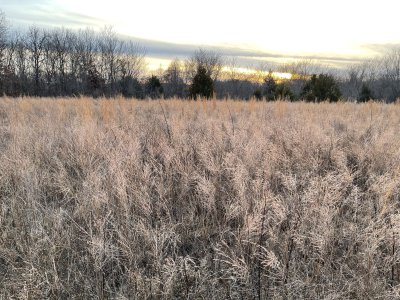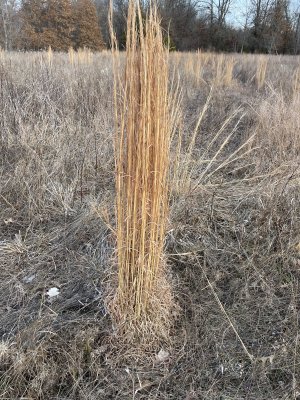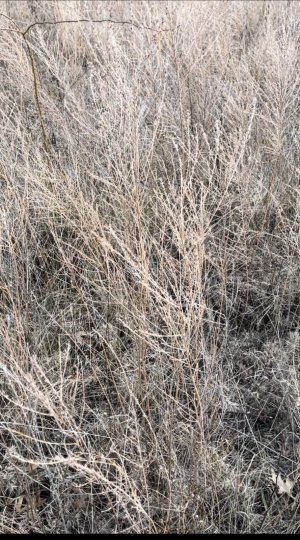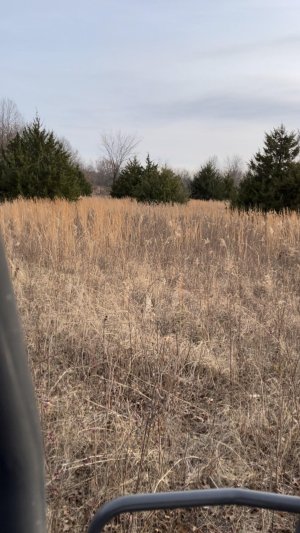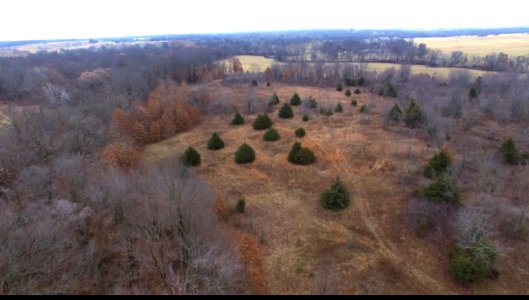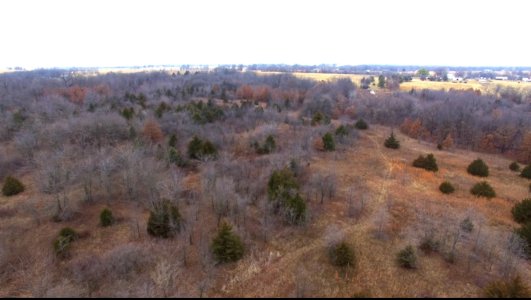You are using an out of date browser. It may not display this or other websites correctly.
You should upgrade or use an alternative browser.
You should upgrade or use an alternative browser.
What all do I have growing in this field?
- Thread starter lazy_turtle
- Start date
lazy_turtle
Yearling... With promise
lazy_turtle
Yearling... With promise
Yes on the eastern red cedar. Still not sure on the brown weed. Hopefully someone knows more then me or you’ll have to wait until it’s green.
Do you think the brown weed could be sericea lespedeza? I'm not sure what that looks like while dormant.
lazy_turtle
Yearling... With promise
Located in West Central MO (45 minutes east of KC)Where are you located? That usually helps.
Looks like you have the start to some beautiful early successional habitat if you help it in the right direction, or you could plant the field to NWSG and the combination of that and the ERC should be a killer combo.
Yeah I’m trying to decide if I should plant plots in those areas or let them stay as potential bedding. But need to figure what all is growing.
j-bird
Moderator
My opinion is that it looks like you have eastern red cedar (the conifer), broomsedge (the orange wispy clumps of grass) some brambles/blackberry and what I think is golden rod. I am sure there is some other stuff in there as well. Like was mentioned....it's much easier to ID plants when they are green.
Get some switchgrass growing in there and you will have the potential for a dandy bedding area depending on it's location and other factors. The reason I say that is most of those plants will be flattened by the snow. Switchgrass will get much taller, grow in clumps and will handle the snow better - maybe not perfectly...but better.
Those trees in the back of the second pic - holding leaves yet - have a high likelyhood of being an oak of some sort as well....
Get some switchgrass growing in there and you will have the potential for a dandy bedding area depending on it's location and other factors. The reason I say that is most of those plants will be flattened by the snow. Switchgrass will get much taller, grow in clumps and will handle the snow better - maybe not perfectly...but better.
Those trees in the back of the second pic - holding leaves yet - have a high likelyhood of being an oak of some sort as well....
Native Hunter
5 year old buck +
The cedars are great, but my opinion is that your existing forbs and grasses are not going to be tall enough for mature bucks to bed in and move in during daylight once they start feeling pressure. If your pressure is not bad, maybe you could get by with it, but where I live, it wouldn’t work.
Your tallest species is the broomsedge, and it is marginal. From your pictures, I can see several yards out into the field at deer level. That is the same as being able to see like that in a woods that’s too open.
If you are a mature buck hunter, I would consider starting from scratch with a mixture of tall NWSGs and forbs that are geared toward a deer prairie. I will also add that if your snows are really bad, you might want to consider an appropriate variety of switchgrass as the only grass you plant (due to winter flattening).
PS - some vastly improved cultivars of both forbs and grasses (compared to what’s already growing in many places) are available. A good example is Partridge Pea. What was already growing on my place got knee high. The improved variety that we planted gets 6 feet high and in several years hasn’t been choked out by tall perennial grasses.
Best wishes and good luck with whatever you decide to do.

Your tallest species is the broomsedge, and it is marginal. From your pictures, I can see several yards out into the field at deer level. That is the same as being able to see like that in a woods that’s too open.
If you are a mature buck hunter, I would consider starting from scratch with a mixture of tall NWSGs and forbs that are geared toward a deer prairie. I will also add that if your snows are really bad, you might want to consider an appropriate variety of switchgrass as the only grass you plant (due to winter flattening).
PS - some vastly improved cultivars of both forbs and grasses (compared to what’s already growing in many places) are available. A good example is Partridge Pea. What was already growing on my place got knee high. The improved variety that we planted gets 6 feet high and in several years hasn’t been choked out by tall perennial grasses.
Best wishes and good luck with whatever you decide to do.

Last edited:
omicron1792
5 year old buck +
Love that switch and pea! What variety of pea is that? Was looking at some online earlier todayThe cedars are great, but my opinion is that your existing forbs and grasses are not going to be tall enough for mature bucks to bed in and move in during daylight once they start feeling pressure. If your pressure is not bad, maybe you could get by with it, but where I live, it wouldn’t work.
Your tallest species is the broomsedge, and it is marginal. From your pictures, I can see several yards out into the field at deer level. That is the same as being able to see like that in a woods that’s too open.
If you are a mature buck hunter, I would consider starting from scratch with a mixture of tall NWSGs and forbs that are geared toward a deer prairie. I will also add that if your snows are really bad, you might want to consider an appropriate variety of switchgrass as the only grass you plant (due to winter flattening).
PS - some vastly improved cultivars of both forbs and grasses (compared to what’s already growing in many places) are available. A good example is Partridge Pea. What was already growing on my place got knee high. The improved variety that we planted gets 6 feet high and in several years hasn’t been choked out by tall perennial grasses.
Best wishes and good luck with whatever you decide to do.

Native Hunter
5 year old buck +
Love that switch and pea! What variety of pea is that? Was looking at some online earlier today
It's the improved variety of Partridge Pea that is sold by Roundstone Native Seeds. They advertise it as growing up to 4 feet tall, but it routinely grows 5 - 6 feet tall in my prairie. The grasses that dominate that particular field are Kaw Big Bluestem and CIR Switch. The switch gets about 7 feet tall and the Big Blue gets about 9 feet tall. I have some other fields that are more dominated by Indian Grass. Our snows are not bad here, and they all stand the winter pretty well. The Big Blue will occasionally flop at a few spots, but mostly stands well too.
Another forb that does great in the tall grasses is smooth ticktrefoil. It's the purple in the second pic below. It's even a more desirable browse than partridge pea. Two other good ones are tickseed sunflower and tall goldenrod.
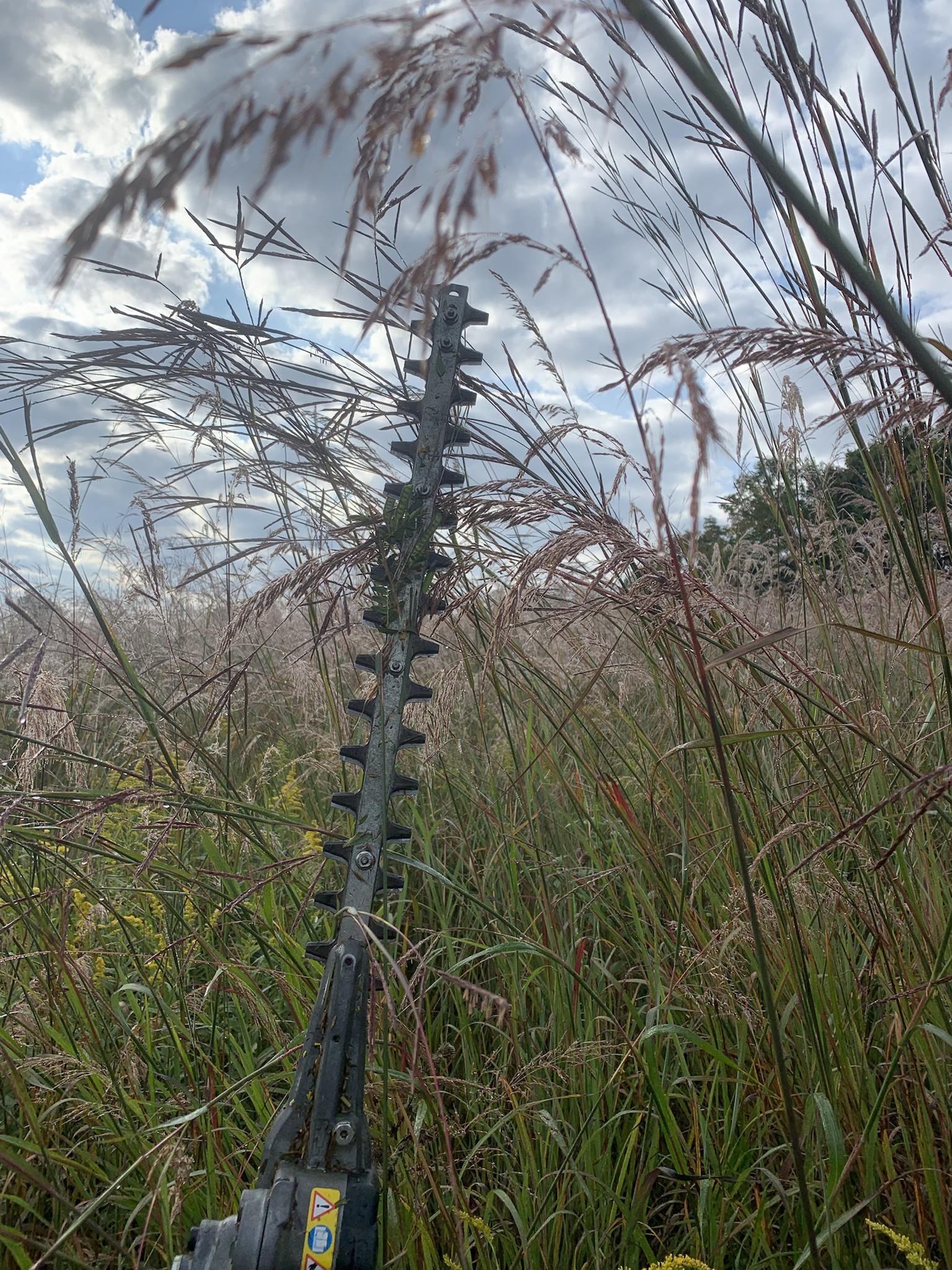
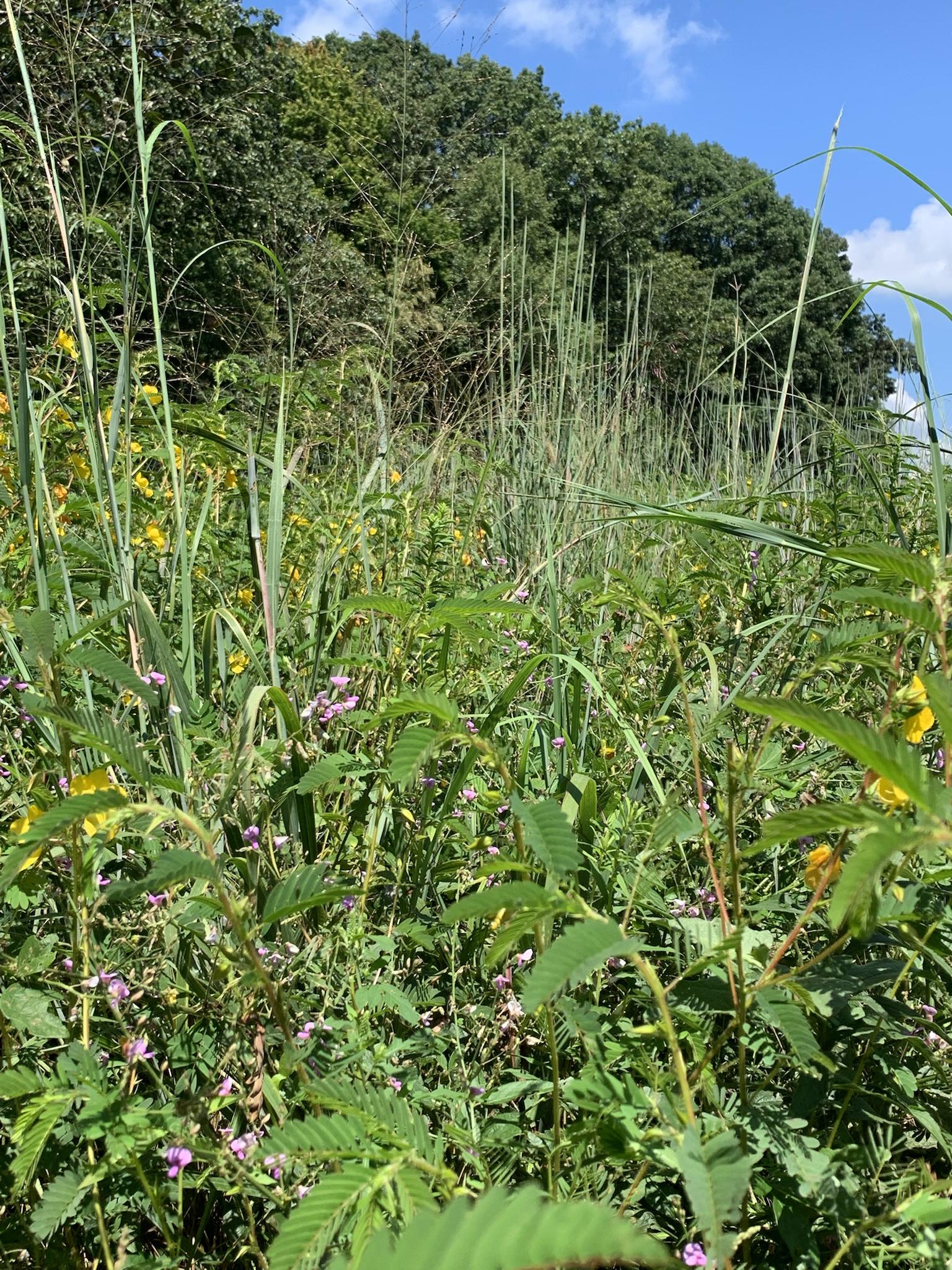
Last edited:
omicron1792
5 year old buck +
I have a lot of golden rod growing. Funny I ordered some of the other three today from Roundstone.It's the improved variety of Partridge Pea that is sold by Roundstone Native Seeds. They advertise it as growing up to 4 feet tall, but it routinely grows 5 - 6 feet tall in my prairie. The grasses that dominate that particular field are Kaw Big Bluestem and CIR Switch. The switch gets about 7 feet tall and the Big Blue gets about 9 feet tall. I have some other fields that are more dominated by Indian Grass. Our snows are not bad here, and they all stand the winter pretty well. The Big Blue will occasionally flop at a few spots, but mostly stands well too.
Another forb that does great in the tall grasses is smooth ticktrefoil. It's the purple in the second pic below. It's even a more desirable browse than partridge pea. Two other good ones are tickseed sunflower and tall goldenrod.


Brian662
5 year old buck +
This is the only variety I saw on their site. Is this what you're referring to? Site says 2-4'The cedars are great, but my opinion is that your existing forbs and grasses are not going to be tall enough for mature bucks to bed in and move in during daylight once they start feeling pressure. If your pressure is not bad, maybe you could get by with it, but where I live, it wouldn’t work.
Your tallest species is the broomsedge, and it is marginal. From your pictures, I can see several yards out into the field at deer level. That is the same as being able to see like that in a woods that’s too open.
If you are a mature buck hunter, I would consider starting from scratch with a mixture of tall NWSGs and forbs that are geared toward a deer prairie. I will also add that if your snows are really bad, you might want to consider an appropriate variety of switchgrass as the only grass you plant (due to winter flattening).
PS - some vastly improved cultivars of both forbs and grasses (compared to what’s already growing in many places) are available. A good example is Partridge Pea. What was already growing on my place got knee high. The improved variety that we planted gets 6 feet high and in several years hasn’t been choked out by tall perennial grasses.
Best wishes and good luck with whatever you decide to do.

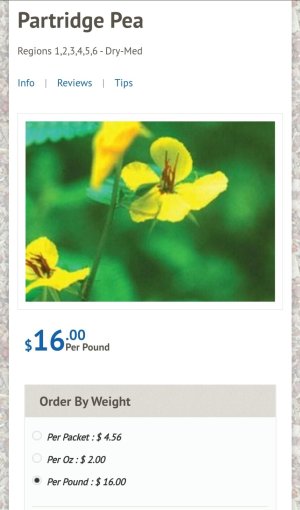
Native Hunter
5 year old buck +
This is the only variety I saw on their site. Is this what you're referring to? Site says 2-4'
View attachment 48264
As I stated above in another post, they advertise it as not growing over 4 feet, but mine routinely grows 5 - 6 feet tall. I would suggest calling and asking them about it. It's been several years since I talked to anyone there, but it used to be very easy to get someone who is knowledgeable.
lazy_turtle
Yearling... With promise
Some really great info here! Thank you! I am trying to decide what I want to do with these areas in the pictures. They are actually the “open” parts of the farm.It's the improved variety of Partridge Pea that is sold by Roundstone Native Seeds. They advertise it as growing up to 4 feet tall, but it routinely grows 5 - 6 feet tall in my prairie. The grasses that dominate that particular field are Kaw Big Bluestem and CIR Switch. The switch gets about 7 feet tall and the Big Blue gets about 9 feet tall. I have some other fields that are more dominated by Indian Grass. Our snows are not bad here, and they all stand the winter pretty well. The Big Blue will occasionally flop at a few spots, but mostly stands well too.
Another forb that does great in the tall grasses is smooth ticktrefoil. It's the purple in the second pic below. It's even a more desirable browse than partridge pea. Two other good ones are tickseed sunflower and tall goldenrod.


Attachments
Native Hunter
5 year old buck +
Some really great info here! Thank you! I am trying to decide what I want to do with these areas in the pictures. They are actually the “open” parts of the farm.
I really love the how you have all those conifers scattered around. You might not need to do anything if your land surrounding those spots has lots of good, thick cover. However, if it's near property lines, a thicker and taller stand of grass and forbs between the conifers would be much better (as I have already alluded to). You might even consider having some small food plots near the center of your place in those areas. It could be a killer setup. Good luck.
lazy_turtle
Yearling... With promise
I really love the how you have all those conifers scattered around. You might not need to do anything if your land surrounding those spots has lots of good, thick cover. However, if it's near property lines, a thicker and taller stand of grass and forbs between the conifers would be much better (as I have already alluded to). You might even consider having some small food plots near the center of your place in those areas. It could be a killer setup. Good luck.
If I decide to plot some of the "open" ground, would you leave or remove the cedars?
Similar threads
- Replies
- 11
- Views
- 444
